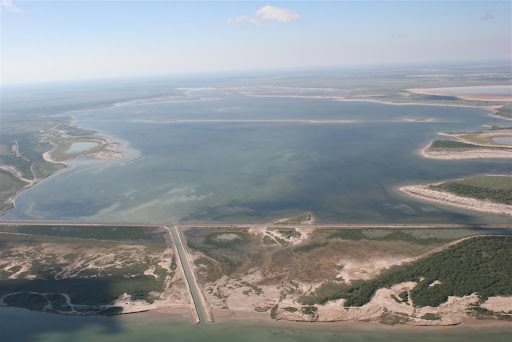Full Title: Is the widening of secondary channels in Bahia Grande needed to improve habitat quality and productivity for its linked basins?
Managers needed to know if the Bahia Grande ecosystem was functioning as a nursery and/or foraging grounds for fish to make informed decisions regarding whether to open Bahia Grande to public use.

Lead Investigator: Carlos E. Cintra Buenrostro, University of Texas Rio Grande Valley, carlos.cintra@utrgv.edu
Natural Resource Manager: Sergio J. Vazquez, Laguna Atascosa National Wildlife Refuge
Project Team: Alejandro Fierro Cabo, University of Texas Rio Grande Valley
Federal Program Officer/Point of Contact: Frank Parker (frank.parker@noaa.gov)
Award Amount: $126,663
Award Period: September 2021 – August 2023
Why it matters: The Bahia Grande complex is a recovering estuarine system within the Laguna Atascosa National Wildlife Refuge, TX. Tidal exchange between the Bahia Grande complex and the Lower Laguna Madre was interrupted in the 1930’s, effectively converting the basin into a dust bowl. This condition remained until a channel was dredged in 2005, connecting the system to the Lower Laguna Madre, allowing flooding and limited tidal exchange. Following the restoration, recovery is occurring, but progress has slowed. A new restoration effort to widen the channel is currently underway which is expected to reduce salinities and improve habitat which will lead to an increase in abundance of economically important fish species. However, before managers can open the area for fishing and general public use, they need to know if the estuary is already functioning as a nursery or foraging ground for fish.
What the team did: The project team held discussions with collaborators at the US Fish and Wildlife Service, National Oceanic and Atmospheric Administration, and the Laguna Atascosa National Wildlife Refuge to refine management questions and project scope. They synthesized all available information on the Bahia Grande complex prior to the disturbance and during the restoration. They also gathered additional information on existing estuarine fisheries management plans and sampling protocols to determine fish habitat use. The project team identified a remaining need to characterize the trophic web structure and the energy flows of aquatic species in the Bahia Grande, including its linked basins (i.e., Laguna Larga and Little Laguna Madre) throughout this coproduction.
Summary of outcome: The team identified new approaches to achieve the management objectives of the Laguna Atascosa National Wildlife Refuge. They developed sampling protocols for future assessment and monitoring efforts within the refuge. The project team also developed a research and development plan to provide refuge staff with sufficient biological and environmental information to make management decisions. e
Not applicable
Not applicable
Not applicable
Not applicable
 Official websites use.gov
A .gov website belongs to an official government organization in the United States.
Official websites use.gov
A .gov website belongs to an official government organization in the United States.
 Secure .gov websites use HTTPS
A lock or https:// means you’ve safely connected to the .gov website. Share sensitive information only on official, secure websites.
Secure .gov websites use HTTPS
A lock or https:// means you’ve safely connected to the .gov website. Share sensitive information only on official, secure websites.